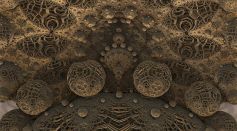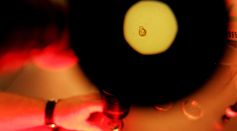NANOTECHNOLOGY

Fitness Sensor Developed Using MXene Ultrathin Nanomaterials to Analyze Perspiration, Monitor a Person's Health

Can We Grow a Vaccine? Researchers Reveal Possibility of Vaccination Through Spinach, Lettuce
Top Science Times Stories 2021: Hot Issues, News That Made Headlines This Year

Structural Blueprint of Nanoparticles Targeting Blood Cells That Cause Lung Inflammation Developed

New Approach to Store Hydrogen Using ‘Nano-Chocolates’ Method Introduced

Cancer Drug Launched in Space via Falcon 9 Launcher: Doxil Nanotech Treatment Tested for Occurrence of Change in Zero Gravity Conditions

Martine Rothblatt Named 2021 Lifeboat Foundation Guardian Award Winner

Tiny Transistors Smaller Than Hair Strand Expected to Help Fabricate Nanoscale Electronic Devices

Nanotech in Medical Imaging, Security Screening; Researchers Reveal How Nanocomposite Works for ‘Picture-Perfect’ X-ray Scans

Japanese Biophysicists Create and Manipulate Capsule-Like DNA Structures with Future Artificial Molecular System Applications
All-Optical Switching for Magnet Recording: A New Approach for More Efficient Nanoscale Magnetic Storage Devices

Soft Contact Lenses Loaded with Gold Nanoparticles; Researchers Develop Substitute for Laser Protection Glasses to Shield the Eyes
Mesothelioma Treatment: New Study Shows How Nanotubes Help Metastasis, Offers New Approach For Battling Cancer Resistance
Smart Transformable Nanoparticles Developed to Diagnose, Treat Tumor; Study Reveals Devising of Biomedical Nanomaterial
Most Popular

Why Stars Twinkle: Flickering Explained by Atmospheric Turbulence and Light Distortion

The Role of Materials Science in Engineering: How Modern Engineering Materials Drive Innovation

Tornadoes vs. Waterspouts vs. Dust Devils: Key Differences and Vortex Types Explained

Climate Adaptation Strategies Explained: How Societies Respond to Climate Change





